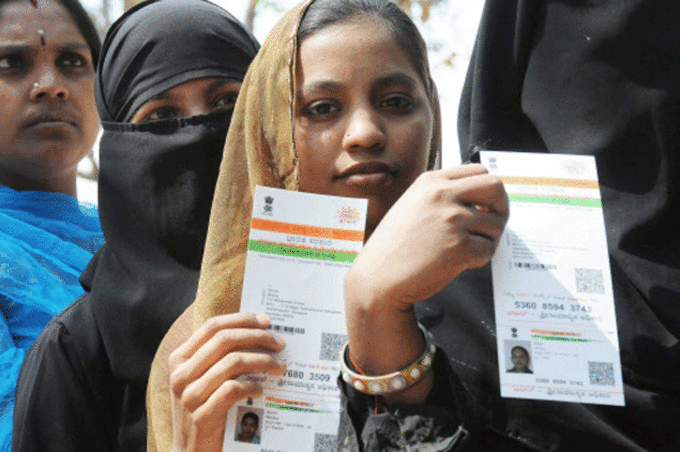 Prime Minister Narendra Modi has been stressing on Aadhar programme and this has impressed the World Bank and how.
Prime Minister Narendra Modi has been stressing on Aadhar programme and this has impressed the World Bank and how.The biometric unique identification card, or ‘Aadhar card’, is slowly becoming mandatory for most of the online transactions.
India’s push for
Paul Romer, chief economist at the World Bank, told Bloomberg, “The system in India is the most sophisticated that I've seen. It's the basis for all kinds of connections that involve things like financial transactions. It could be good for the world if this became widely adopted."
From healthcare services to booking a railway ticket, Aadhar is crucial for these services. Aadhar has also given legal identities to Indians who can't prove who they are.
The United Nation's Sustainable Development Goals aim to provide legal IDs to all by 2030, triggering the creation of a range of platforms that offer basic rights to citizens of poorer countries while allowing those in the advanced world granular control over their digital data, such as school or medical records, and streamlining immigration.
“Other governments are already interested in its potential. Countries such as Tanzania, Afghanistan and Bangladesh have visited India to talk about the system,”
Russia, Morocco, Algeria and Tunisia have also indicated their interest in Aadhaar, R.S. Sharma, chairman of the telecom regulatory authority of India, told the Mint newspaper in July 2016.
However, many sections have criticized it, saying it violated national security and kept citizens under a constant watch. Before storming to power, Modi had opposed Aadhaar. Now he counts it as a key part of his push to move India towards cashless transactions and save money on the payment of social security benefits.
"Centralized databases, even if the information contained therein on any one individual is kept to a minimum, pose a risk," Dakota Gruener, executive director at ID2020, a public-private partnership that aims to create digital IDs for refugees, told Bloomberg.
There has been no incident of misuse of Aadhaar biometrics leading to identity theft and financial loss during the last five years, the issuing authority said in a statement on March 5, in response to a spate of news reports about breaches.
However in a briefing it said it had shut 12 private websites and 12 mobile applications and was on the verge of closing 26 more for illegally obtaining Aadhaar numbers or enrollment details.
Aadhaar is designed on the principle of "optimal ignorance," said Nilekani. While Aadhaar knows you're using the system to identify yourself on Skype, for example, it's never privy to the details of the call. Microsoft says it deletes all Aadhaar data once the call has been disconnected.
The problem is not so much with Aadhaar, said Romer, who founded a technology company in 2000, but with the many private firms collecting large amounts of data about people.
"It should be part of the policy of the government to give individuals some control over the data that the private firms collect and some control over how that data is used," he said.
Here’s how Aadhar works:
1. A unique 12-digit number is assigned to Indian residents and their details are stored in a central database.
2. If you want to open a bank account or buy a mobile SIM card, you have to provide your Aadhaar number and place their finger on a scanner. This action permits the bank or utility to ask the Aadhaar database to verify their credentials. This eliminates providing documents for proof of identification.
